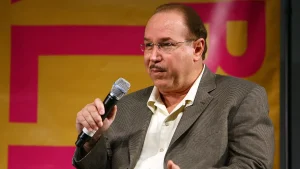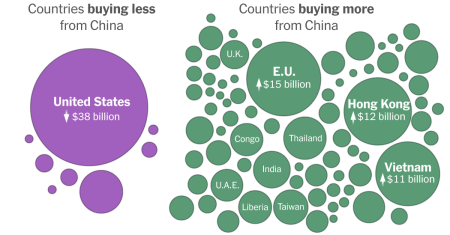Russia and China’s Nuclear Testing Revealed: Trump’s Claims Confirmed
In a significant validation of President Donald Trump’s recent assertions, CIA Director John Ratcliffe and Senate Intelligence Committee Chairman Tom Cotton have confirmed that Russia and China are indeed conducting covert nuclear weapons tests. This revelation comes at a critical moment in global nuclear politics and adds substantial weight to Trump’s announcement that he has ordered the Pentagon to resume U.S. nuclear testing for the first time in over three decades. The confirmation represents a pivotal shift in what the public understands about ongoing nuclear activities among major powers and potentially marks a new chapter in global nuclear deterrence strategies.
The intelligence officials’ statements were unequivocal in their support of Trump’s claims. Ratcliffe took to social media platform X (formerly Twitter) stating plainly, “@realDonaldTrump is right,” and referenced intelligence assessments dating back to Trump’s first term indicating that both Russia and China have not adhered to the international moratorium on nuclear explosive testing. Senator Cotton provided further clarity after consulting with Ratcliffe’s team, revealing that “the CIA assesses that both Russia and China have conducted super-critical nuclear weapons tests in excess of the U.S. zero-yield standard.” Cotton emphasized that these tests are not historical anomalies but ongoing components of these nations’ nuclear modernization programs. This confirmation directly contradicts the assumption many Americans and global citizens have held that major powers have universally respected the testing moratorium that has been in place since the early 1990s.
The president’s decision to resume U.S. nuclear testing appears to be a direct response to these activities by rival powers. Trump’s announcement came last Wednesday through his Truth Social platform, where he stated he had instructed the “Department of War” to “start testing our Nuclear Weapons on an equal basis” with other countries, adding that “that process will begin immediately.” He elaborated on this position during a “60 Minutes” interview that aired Sunday, explaining his reasoning: “The testing is because Russia announced that they were doing a test. If you notice, North Korea is testing constantly. Other countries are testing. We’re the only country that doesn’t test, and I don’t want to be the only country that doesn’t test.” When interviewer Norah O’Donnell challenged these assertions, Trump doubled down, stating plainly that “Russia is testing nuclear weapons, and China is testing them too, you just don’t know about it.” These statements reflect Trump’s consistent view that the United States should not unilaterally adhere to restrictions that its adversaries may be violating.
The revelations from Ratcliffe and Cotton provide crucial context for understanding the shifting nuclear landscape. The confirmation that Russia and China are conducting “super-critical nuclear weapons tests” that exceed the “U.S. zero-yield standard” suggests that these nations are testing devices that produce nuclear yields, even if small ones. This represents a significant breach of the spirit, if not the letter, of international norms established after the Cold War. The United States has observed a voluntary moratorium on nuclear explosive testing since 1992, with its last test being an underground detonation at the Nevada Test Site. During this three-decade hiatus, the U.S. has maintained its nuclear arsenal through computer simulations, subcritical experiments (which don’t produce a nuclear chain reaction), and other non-explosive means of verification. The revelation that America’s primary strategic competitors are gaining potential advantages through actual explosive testing could represent a significant national security challenge that the administration feels compelled to address.
The implications of this development extend far beyond simply resuming a dormant testing program. Resuming nuclear testing would mark a profound shift in U.S. nuclear policy and could trigger significant international reactions. Such a move would likely face criticism from non-nuclear states and nuclear disarmament advocates who have long pushed for the Comprehensive Nuclear-Test-Ban Treaty to enter into force. It could potentially spark a new nuclear testing race among major powers, with each seeking to demonstrate and refine their capabilities in response to others. Environmental and health concerns would also emerge, though modern testing would likely be conducted underground to minimize atmospheric effects. Additionally, the domestic politics surrounding such a decision would be complex, with potential opposition from some members of Congress and environmental groups, balanced against those who favor demonstrating American resolve and technological superiority in the face of perceived Russian and Chinese cheating.
What remains unclear is exactly what form any new U.S. testing program might take. Trump has not specified whether potential tests would be conducted above or below ground, nor has he provided a concrete timeline beyond saying the process would begin “immediately.” The logistics of resuming testing after such a long hiatus would be complex, requiring the reactivation or reconstruction of testing infrastructure, assembly of specialized personnel, and navigation of various regulatory hurdles. Moreover, the incoming administration would need to carefully calibrate the scope and nature of any testing program to achieve strategic objectives without unnecessarily escalating tensions or triggering a full-scale testing race. What is clear, however, is that this moment represents a potential inflection point in global nuclear politics, with the world’s nuclear powers potentially entering a new era of more overt competition in nuclear capabilities development. As this situation develops, the international community will be watching closely to see how these dynamics unfold and what new nuclear reality might emerge from this significant shift in policy and practice.












